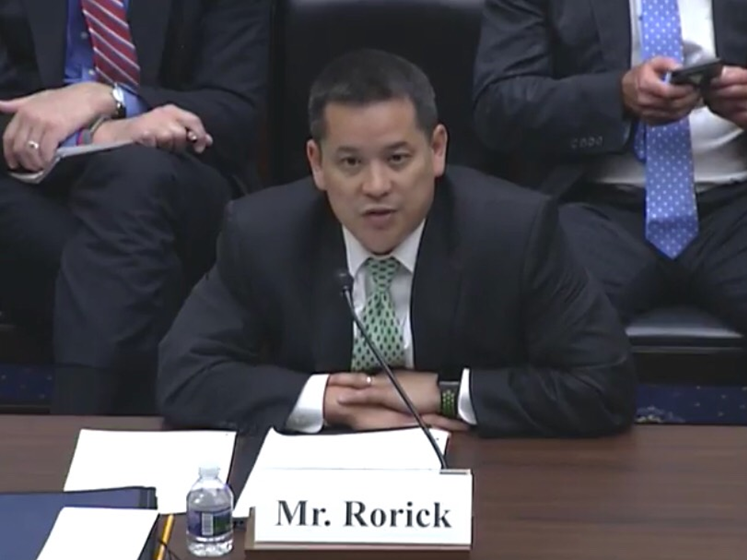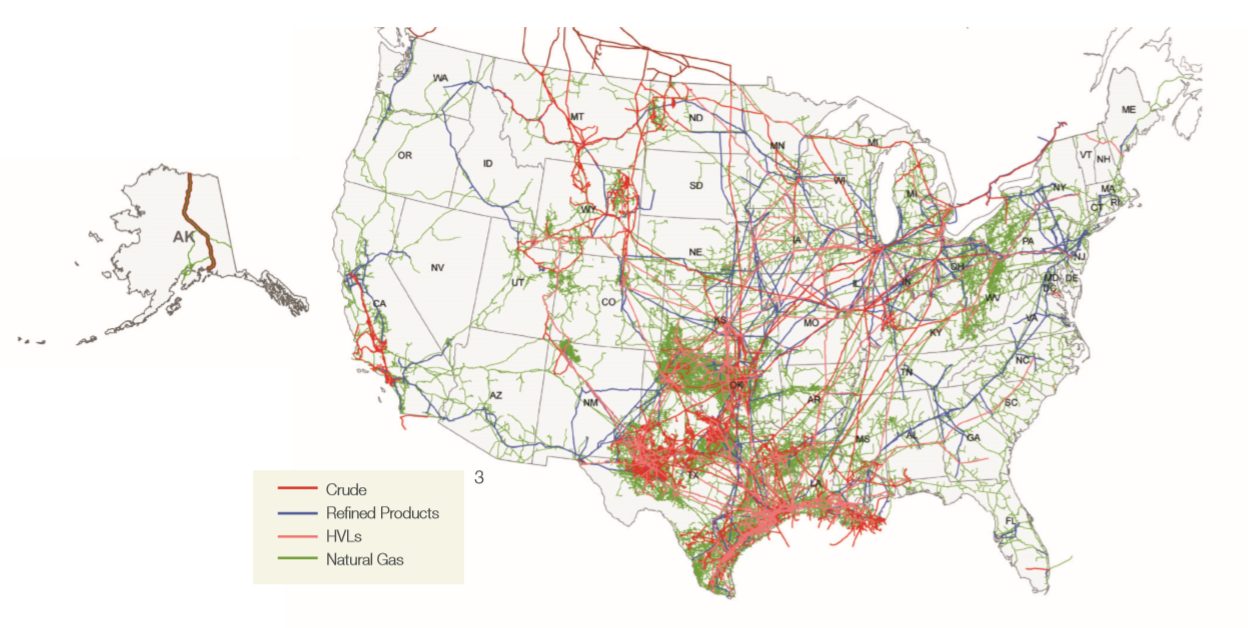Pipelines — Safely Delivering Energy that Powers America
Jessica Lutz
Posted June 22, 2018
Pipelines play a vital role in delivering the energy American families and businesses need every day. The nation's more than 212,000 miles of liquid pipelines and over 300,000 miles of natural gas pipelines are among the safest and most efficient means of moving petroleum products to consumers. And, because most are buried, they are largely unseen.
The natural gas and oil industry recognizes the integral nature of pipeline infrastructure and is committed to advancing pipeline safety to protect communities and the environment. These points were highlighted at today’s House Transportation Subcommittee hearing by Robin Rorick, API midstream and industry operations group director:
“Pipelines are critical to ensuring that consumers keep feeling the benefits of our nation’s vast energy resources, and they are one of the most efficient ways to safely deliver the energy that Americans use every day from the gasoline that fuels our transportation system to the life-saving medical devices made from liquid petroleum products to the clean natural gas that is used to generate much of the electricity for our Nation’s homes, manufacturing plants, hospitals and schools.
“API continues to develop and revise critical standards and recommended practices following the accreditation process of the American National Standards Institute—or ANSI. Specifically, API has developed a number of standards to address pipeline safety in close coordination with subject matter experts from industry, government, academia and the broader stakeholder community. In fact, PHMSA has incorporated by reference many of these standards in their regulations.”

Below, Rorick’s oral testimony:
Good morning Chairman Denham, Ranking Member Capuano, and Members of the Subcommittee. I am the Midstream Group director at the American Petroleum Institute where I oversee the organization’s efforts to promote and ensure the safety of our nation’s energy infrastructure – including pipelines, rail, and maritime assets.
We appreciate the subcommittee’s focus on promoting the safety of our nation’s energy infrastructure and appreciate the Pipeline and Hazardous Materials Safety Administration’s efforts to continue to implement the Protecting our Infrastructure of Pipelines and Enhancing Safety Act of 2016. However, in doing so it is important that it be done in a way that helps ensure that practical and performance-based safety regulations are instituted. The development of efficient and effective pipeline safety regulations ensures that we are taking proper actions to protect the public and the environment while at the same time continuing the U.S. energy renaissance that provides American consumers with access to affordable and reliable energy.
Right now, the United States is leading the world in the production and refining of natural gas and oil AND leading the world in the reduction of carbon emissions to their lowest levels in 25 years. Further, consumers are benefitting from our nation’s energy dominance throughout the world with affordable American energy.
Pipelines are critical to ensuring that consumers keep feeling the benefits of our nation’s vast energy resources, and they are one of the most efficient ways to safely deliver the energy that Americans use every day from the gasoline that fuels our transportation system to the life-saving medical devices made from liquid petroleum products to the clean natural gas that is used to generate much of the electricity for our Nation’s homes, manufacturing plants, hospitals and schools. It’s estimated that increased investment in our nation’s energy infrastructure – including pipelines – is a $1 trillion proposition that could support one million jobs per year through 2035 and add up to $100 billion to our GDP annually.
Source: API
At the direction of Congress, PHMSA has been working on the development of two significant pipeline safety regulations—one for oil and another for natural gas. Our industry has and will continue to proactively and collaboratively engage with the agency as they develop these rules to achieve our shared goal of ensuring the safe and efficient transportation of our oil, natural gas and their products.
For example, for the Safety of Hazardous Liquids Transmission rule, we encourage PHMSA to consider our recommendations including repair criteria, and the ability to use engineering analysis in examining pipeline anomalies. For the Safety of Gas Transmission and Gathering Pipelines rule, we appreciate and support the collaborative discussions through the Gas Pipeline Advisory Committee—or GPAC—to produce consensus recommendations for new regulations. We hope to see similar discussions through the GPAC for gathering pipelines, including the consideration of a new API Recommended Practice on the subject.
As an industry, we are committed to safety in all of our operations. API continues to develop and revise critical standards and recommended practices following the accreditation process of the American National Standards Institute—or ANSI. Specifically, API has developed a number of standards to address pipeline safety in close coordination with subject matter experts from industry, government, academia and the broader stakeholder community. In fact, PHMSA has incorporated by reference many of these standards in their regulations. As API standards are updated, or new ones are developed to incorporate the latest advances and best practices in safety within our industry, PHMSA should execute a timely review process to incorporate by reference the latest edition or the first edition of appropriate standards.
Ensuring that pipeline operators can use the most recent and innovative technology will also help to bolster pipeline safety. Current regulations have no deadlines associated with PHMSA’s review, notification, and issuance of special permits for new technology. This can result in inefficiencies, and more importantly can prevent the industry from taking advantage of the latest safety equipment and practices. Operators are required to conduct timely assessments of pipeline integrity, and that may often be done more effectively with a new technology.
However, there is hesitation to do so, given at times the burdensome special permit process. Requiring PHMSA to exercise their authority to issue a special permit to review alternative safety technology permit applications within 90 days will not only provide greater certainty in the special permit process, but it will also aid operators in utilizing the latest, cutting-edge technologies to further pipeline safety. In fact, at a more recent meeting of the Gas Pipeline Advisory Committee, members recommended including this concept in the proposed Safety of Gas Transmission and Gathering Lines rule, and PHMSA expressed agreement.
Let me close by once more emphasizing that the oil and natural gas industry is committed to promoting safety in all its operations while it strives to ensure that American families and businesses can safely and efficiently access affordable and reliable energy. Again, thank you the opportunity to appear before you today, and I am happy to answer any questions that you may have.
The full written testimony is available on the API website.
About The Author
Jessica Lutz is a writer for the American Petroleum Institute. Jessica joined API after 10+ years leading the in-house marketing and communications for non-profits and trade associations. A Michigan native, Jessica graduated from The University of Michigan with degrees in Communications and Political Science. She resides in London, and spends most of her free time trying to keep up with her energetic Giant Schnauzer, Jackson.



